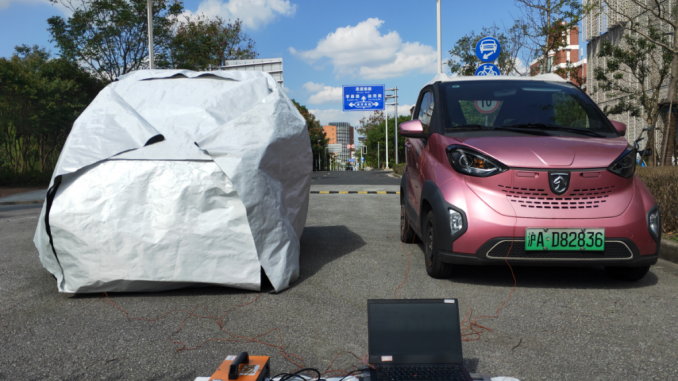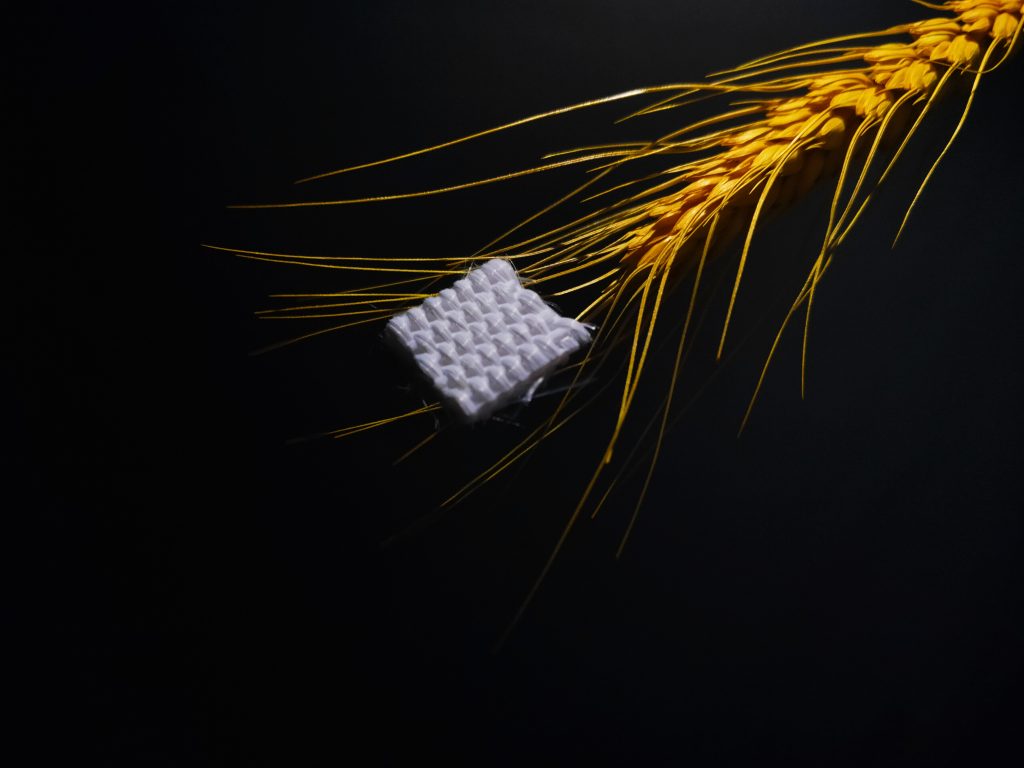
By James Gamble
A space-age new cloak for electric cars makes batteries last longer by keeping vehicles cool in the summer and warm in the winter without using any energy.
The all-season Janus thermal cloak can cool an electric vehicle by 8° C (46.40 °F) (46.4°F) on a hot day and warm it by 6.8°C (44.2°F) overnight, scientists claim.
And scientists say it could be used on buildings, spacecraft, or even extraterrestrial habitats to keep cool in summer and warm in winter.
The clever cloak, made mainly from silica and aluminium, does its job independently – with no external energy input – and with no modifications required for hot or cold weather.
Researchers from Shanghai, China, describe the cloak as “clothes for vehicles” and claim it can extend the battery life of electric cars by avoiding damaging changes in temperature.
The prototype, featured in the application-orientated journal Device, dampens natural temperature fluctuation by isolating the vehicle – or any other object beneath it – from its surrounding environment.
It consists of two main components: an outer layer, which efficiently reflects sunlight, and an inner layer which traps and stores heat inside.
Heat absorbed by the cloak’s outer layer is also emitted in a way which dissipates it into the outer environment.
The cloak’s two-way design earned it its name of the Janus thermal cloak – after the two-faced Roman god, Janus.

The outer lining of the cloak is made of thin silica fibers coated in flakes of hexagonal boron nitride; a ceramic material similar to graphite that enhances the fiber’s solar reflectivity.
These fibers are then braided and woven together into a fabric and adhered to the inner layer, which is made of aluminium alloy.
The research team, from Shanghai Jiao Tong University, assessed the cloak’s performance on electric vehicles under typical, ambient conditions in Shanghai, on China’s central coast.
While the cabin temperature of an uncovered car reached 50.5°C (122.9°F) at midday, the cabin of the cloak-covered car reached 22.8°C —27.7°C (73°F -81.9°F) lower than the uncovered car and 7.8°C (46°F) lower than the temperature outside the vehicle.
At midnight, the covered car stayed 6.8°C (44.2°F) higher than the temperature outside and never dropped below 0° C (32.00 °F) (32°F).
Dr. Kehang Cui, a materials scientist at Shanghai Jiao Tong University and senior author of the study, suggested the cloak could even become useful in space travel and in alien habitats.
“The thermal cloak is like clothes for vehicles, buildings, spacecraft, or even extraterrestrial habitats to keep cool in summer and warm in winter,” Cui explained.
“The cloak works basically the same way the earth cools down: through radiative cooling.
“The earth is covered by the atmosphere, and the atmosphere is transparent to a certain range of electromagnetic energy we radiate.
“You have to develop something that can turn on and off by itself without external energy input, and that’s extremely difficult.”
Cui and his team designed the cloak to automatically counteract this effect in the winter, using an effect called “photon recycling.”

*The phononic metafabric on top of a wheat spike. (Huaxu Qiao via SWNS)
Essentially, any energy trapped under the cloak will bounce back and forth between the car and the cloak rather than escape to the surroundings outside.
On the successful tests of the cloak, Cui added: “This is the first time that we could achieve warming above the ambient temperature by almost 7° C (44.60 °F) [44.6°F] during winter nights.
“This is also kind of surprising to us: there’s no energy input or sunshine and we can still get warming.”
Cui’s team purposefully designed the cloak to make scaling-up production easier in the future.
Using thinner silica fibers would have increased solar reflectivity, but they would be weaker and couldn’t be made with high-volume, industrial-level production techniques already available.
Materials used such as aluminium, silica, and boron nitride, are all also low-cost and make the cloak lightweight, durable, and fire-retardant.
Produced in association with SWNS Talker
